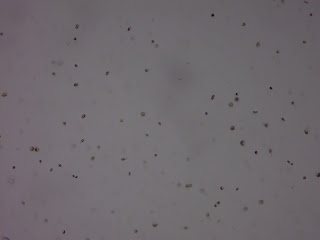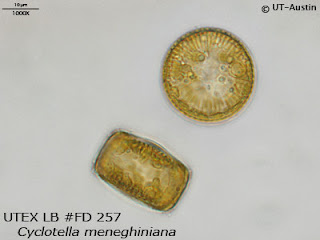As of last week, my hands-on research has concluded. While I still have not calculated everything out (hey, I've got a show performing this and next weekend, and a talent show to host, gimme a break), I have begun writing my research paper and gathering various other sources and similar research papers to compare my research to. I have also begun looking into the context of the Deepwater Horizon spill, the one my experiments were vaguely modeled off of.
From what I gather watching the movie Deepwater Horizon and reading the wiki article, the spill did have (a lot of) foreshadowing. But before I get into detailing the faulty cement and enormous PSI noted in the well just hours before the explosion, let me first detail how the rig worked.
The Deepwater Horizon was a "10 year-old semi-submersible, mobile, floating, dynamically positioned drilling rig" according to Wikipedia. What does this mean? The semi-submersible part means that the rig is fixed to the top of a two-part pontoon. One part stays above water and keeps the rig hovering above the waves. The second part is buoyant and sits below the surface of the ocean, keeping both the platoon and the rig afloat and stable. The pontoon also had thrusters attached to it that helped to keep it in position. They worked like the propellers on a ship and could be used to reposition the rig if it floated too far from the well center. This is why it's "mobile" and "dynamically positioned."
These types of rigs are used when the seabed is too far down to effectively anchor the rig to it. This means that the only thing actually anchoring the floating rig to the well below was approximately 5,100 feet (1,600 m) of pipe called a marine drilling riser. But that's just the distance to the seafloor, where the cement head of the well lies. The piping was also buried another 13,260 feet (4,000 m) under the sediment to actually reach the oil and gas, meaning in total, the pipe stretched 18, 360 feet (5,600 m) below sea level. If something goes wrong in the drilling riser, such as a leak or a pressure build-up, there was a kill line and a high pressure choke to control the situation. On April 20th, 2010, those precautions proved not enough.
Deepwater Horizon was also an exploratory rig at the time, meaning it's main purpose was solely to drill the well, and then cap it off so drilling vessels in the future could come, reopen it, and take what they needed.
On April 20th, 2010, the day the spill took place, a team of engineers sent from the company British Petroleum (BP) were set to test the cement just recently placed at the very bottom of the newly-completed well. The cement was supposed to act as a stopper for the oil and gas, preventing it from uncontrollably flowing into the marine drilling riser while they finished drilling and capped it off, as well as a stabilizer for the marine drilling riser, to keep it upright and prevent it from moving around. The team left the rig before they could even start the test, likely because they were set to head back to BP HQ to report that the well was "safe" and ready for active oil pumping. Why the big rush? You see, Deepwater Horizon was 43 days behind BP's set schedule. Every extra day the rig took cost the company an extra half a million dollars because the company was actually loaning the rig from another company called Transocean. Needless to say, they wanted the drilling done ASAP.
Because the cement test was never run, (therefore, because they didn't know if the cement had been laid properly so it wouldn't leak) it was decided between the remaining BP employees and the rig crew to conduct what is commonly called a "negative pressure test." This means they were going to temporarily flush out the drilling fluid (called "mud") in the kill line, choke line, and drilling riser with the lighter-density seawater and see how much pressure the seawater was going to exert on the mud in doing so. This simulates the well becoming "active," as when the oil actually starts flowing, it will act like the seawater and push up on the mud until it comes out of the drilling riser and into an oil transport vessel. If all is well in the drilling riser, then there should be no pressure detected. The mud should have to be removed manually in order to allow the water to flow up the pipe.
So in conclusion, the PSI reading on the negative pressure test should have been 0. Instead, it came out to 1,260-1,400 (sources differ as far as I've seen, but the point is it was really high). This means that the seawater was pushing up so hard on the mud, safety valves could barely hold back all the fluid from rushing up the pipe all at once. But for some reason, (a reason which none of the surviving rig crew or BP employees can agree on), the rig was never evacuated. Instead, the pressure test was considered a "success."
The crew and employees then decided to leave some of the seawater in the riser instead of replacing it with mud again. This is a tactic that supposedly was used to preemptively help tankers encourage the oil to flow back up when they reopened the well in the future. But experienced drillers shake their heads at this, saying it was an unsafe move that would only be used save them time and money. Leaving lighter-density seawater in the riser was inviting any sort of small leak to grow bigger due to a lack of sufficient pressure within the well.
Now it's around 9 pm. The rig sits humming atop the waves as some of the crew call their families. The work's completed, they tell them, they're going to be home soon. No one is paying serious attention to the sensors. Suddenly, there's a rise in pressure in the drilling risers. Oil and gas are leaking through the leaks in the cement at the bottom of the well into the riser. The countdown to the explosion has begun.
9:49 pm. A crew member by the name of Andrea Fleytas is looking over the positioning system of the rig on the bridge of Deepwater. She feels the floor beneath her jolt. The monitor next to her displaying the layout of the rig begins blaring magenta over nearly all of the rig sections. She panics. Magenta is the worst color to see on a drilling rig. It signals the most dangerous amount of combustible gas possible has flooded in from the well.
At approximately 9:56, the rig is abruptly consumed in fire. Boom. 11 crew members never found and presumed dead. Boom. 17 physically injured by fire and debris. Boom. 4.9 million barrels of oil doomed to bubble into the Pacific.
This explosion was classified as an accident, but there were so many preventable causes. BP would end up paying over $54 billion dollars to settle federal and state claims as of 2015, an amount hardly necessary if this truly was an "accident."
Truthfully, I don't believe there's any amount British Petroleum could have payed to make up not only for the loss of 11 valuable lives, but also the immeasurable damage they caused to the marine environment during and after the spill. Although the days immediately before the spill have been painted with blurry perspectives as to who was more responsible for ignoring the warning signs, the BP employees or the rig crew, what is undeniably true is that everyone felt the company's pressure to hurry up as the time ticked on and their profits declined. Corners were cut and safety regulations were ignored all so the company could meet its monthly quota. No amount of money can ever forgive that.
Signing off till next time, this is Erin Butcher.

























